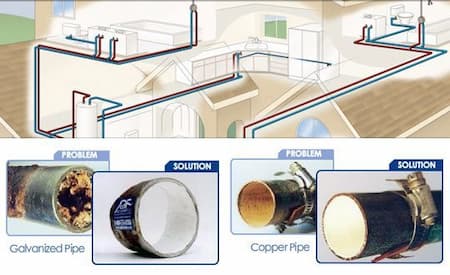Modern Pipe Lining Explained: A Versatile Solution for Sewer and Drain Problems

When sewer or drain issues arise, many homeowners assume that fixing the problem will involve digging up their yard or breaking through concrete. Fortunately, advances in plumbing technology have introduced more efficient, less disruptive methods. Pipe lining has quickly become one of the most reliable solutions in the industry, allowing professionals to rehabilitate aging pipes from the inside out. This blog will break down what pipe lining is, how it works, and why it may be the best option for your property.
What Is Pipe Lining?
Pipe lining is a trenchless plumbing technique used to repair damaged or aging sewer and drain lines without the need for extensive digging. Instead of excavating the entire pipeline, professionals insert a new lining into the existing pipe, which hardens and forms a durable, seamless interior surface. This method is especially valuable in urban areas or properties where preserving landscaping, driveways, and hardscapes is a priority.
The process is efficient, long-lasting, and suitable for both residential and commercial applications. Whether it's a minor crack or a severely deteriorated line, pipe lining offers a cost-effective and non-invasive solution that restores function and extends the life of the existing infrastructure.
How the Pipe Lining Process Works
The pipe lining process typically begins with a thorough inspection using a sewer camera. Once the damage is identified, the pipe is cleaned using high-pressure water or mechanical tools. After cleaning, a flexible liner coated with epoxy resin is inserted into the pipe. The liner is then inflated and cured in place, creating a strong, smooth surface that resists corrosion, leaks, and root intrusion.
Cured-in-place pipe (CIPP) lining is one of the most common forms of pipe lining, but other options like spray-in-place or inversion lining may be used depending on the condition of the original pipe and the goals of the project.
Why Choose Pipe Lining?
Pipe lining is gaining popularity for a number of practical reasons. It's not only reliable but also minimizes disruption to your property and your daily life. If you’re weighing your options, consider the following advantages of pipe lining over traditional pipe replacement.
- Less Invasive – No need to tear up your yard, sidewalk, or driveway
- Time-Saving – Most pipe lining projects are completed within a day
- Cost-Effective – Reduces labor, excavation, and restoration costs
- Long-Lasting – Creates a durable, corrosion-resistant inner pipe
- Environmentally Friendly – Reduces material waste and avoids harmful byproducts
These benefits make pipe lining a smart investment for property owners looking to address plumbing issues without the mess and expense of traditional methods.
Is Pipe Lining Right for You?
Pipe lining is suitable for a wide range of sewer and drain problems. If you're experiencing frequent backups, slow drains, or signs of pipe corrosion, this trenchless plumbing method might be the ideal solution. It's effective for pipes made of cast iron, clay, concrete, and other common materials.
That said, a proper inspection is always necessary. In cases where the pipe has collapsed or is severely misaligned, other trenchless options like pipe bursting may be more appropriate. A licensed specialist can evaluate your system and recommend the best course of action.
Choose a Trusted Pipe Lining Expert
Pipe lining requires specialized equipment and expertise, so it’s important to choose a company that’s experienced in trenchless repair technologies. A skilled technician will be able to assess your pipe’s condition, explain your options clearly, and carry out the job efficiently.
Ready to restore your sewer or drain lines without digging up your property? Contact us today at Missing required attribute: Missing required 'which' attribute on shortcode phone-number. to schedule a trenchless pipe lining consultation and get your plumbing system back on track.